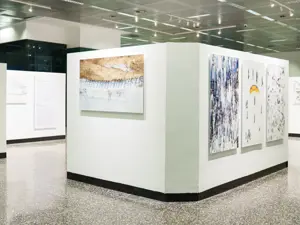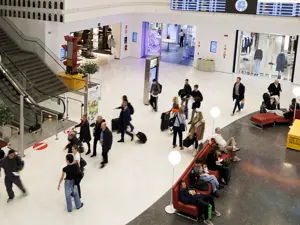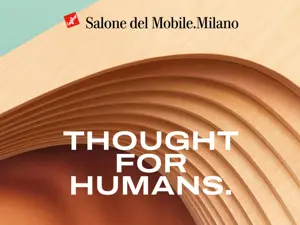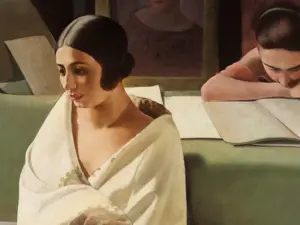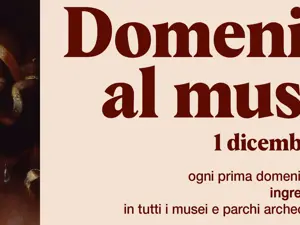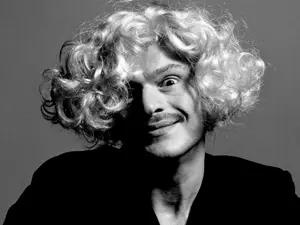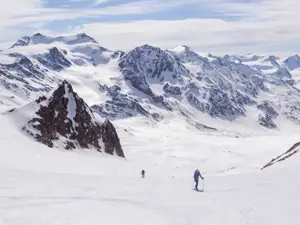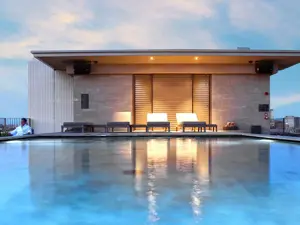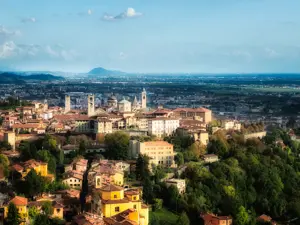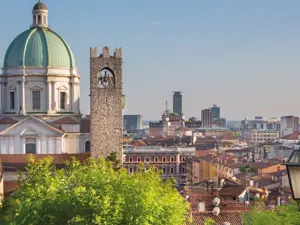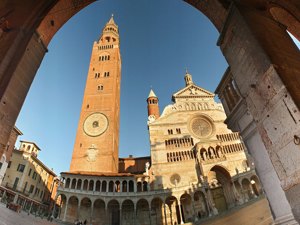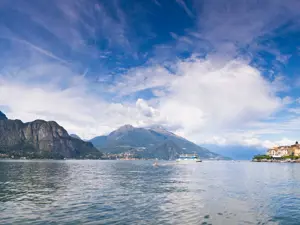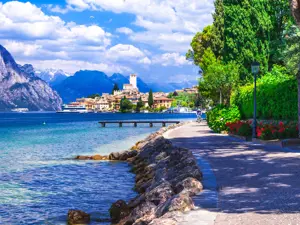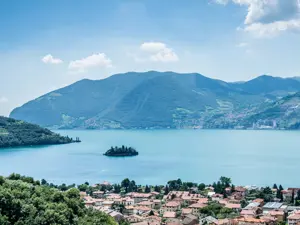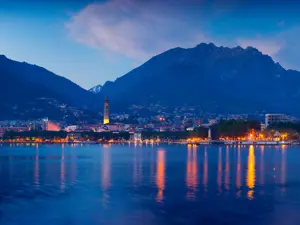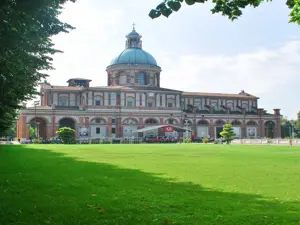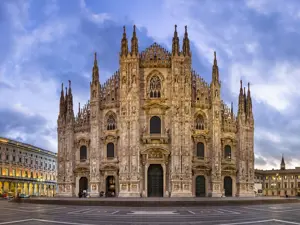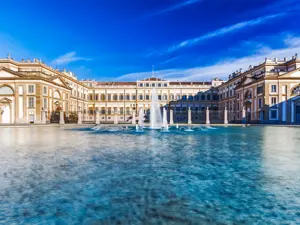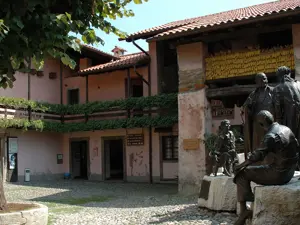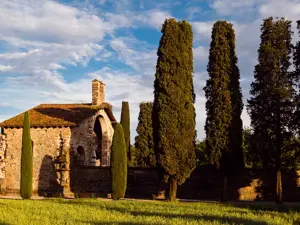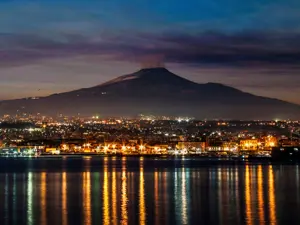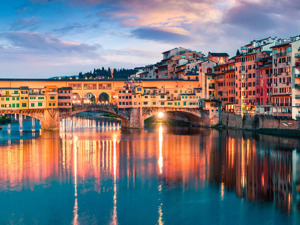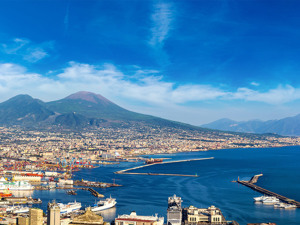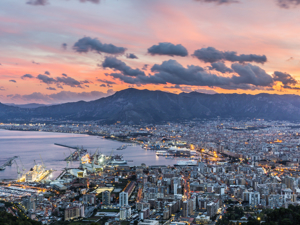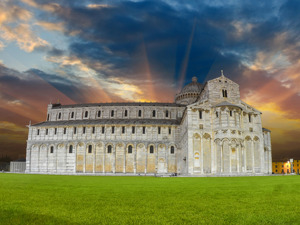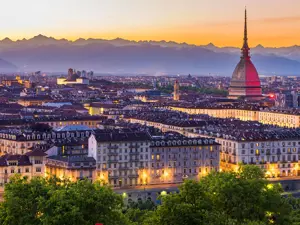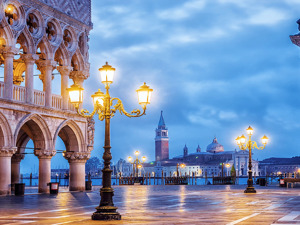A land of bell towers - the architectural symbol of cities and towns in Italy,
Lombardy boasts an artistic heritage that embodies history, culture and lifestyle
The history of Lombard architecture is marked by numerous castles, fortresses and walls erected to defend the cities, such as the majestic walls that enclose the beautiful Upper Bergamo, a UNESCO World Heritage (from July 9, 2017) as Venetian Works of Defence, between 15th and 17th centuries.
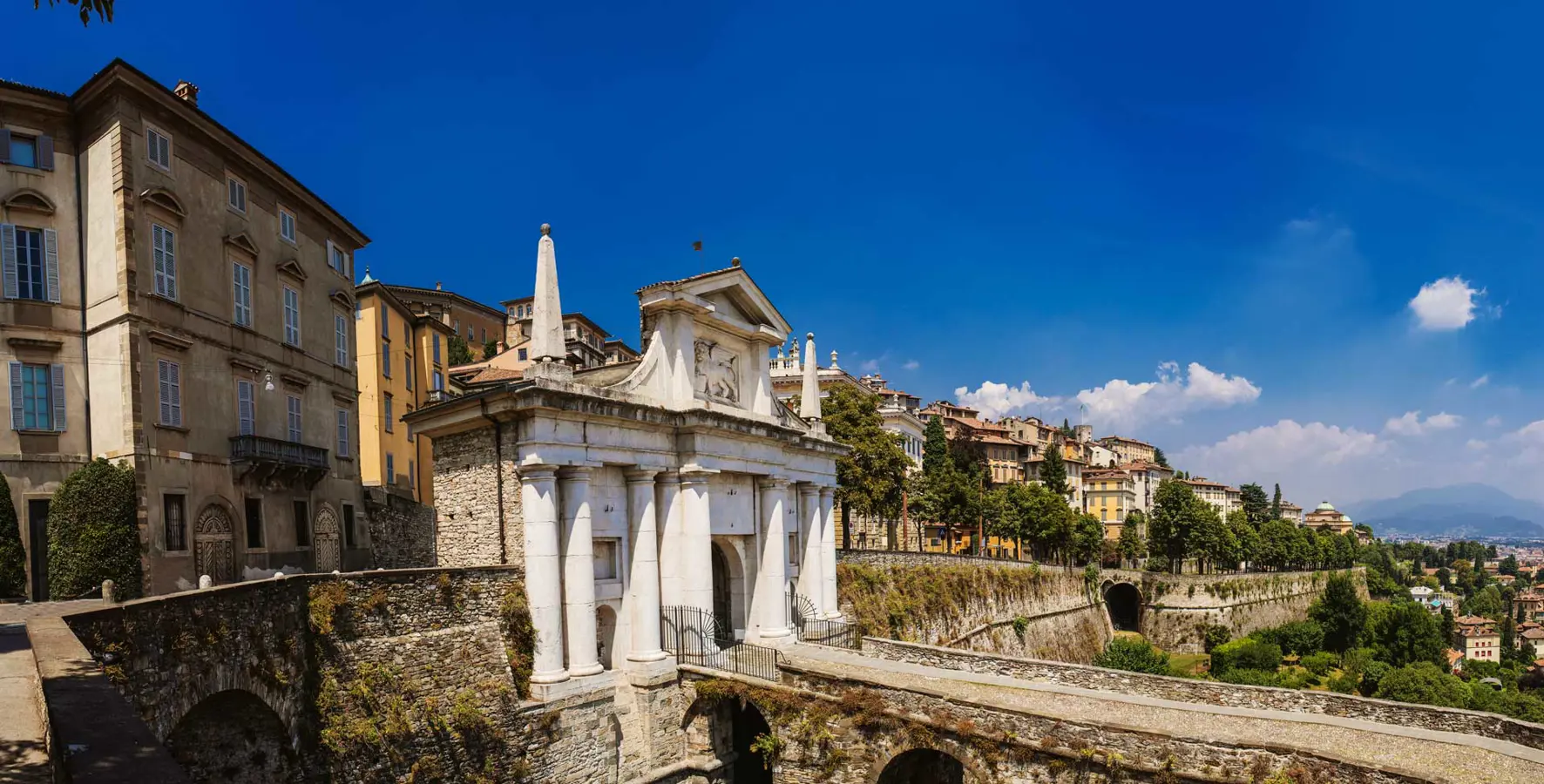
Almost everywhere you can find wonderful buildings: the Rocca Scaligera, which was sited to guard the Dock of Sirmione, the Castle of Vigevano with the adjacent Ducal Palace, the Visconti Castles of Voghera, Pavia, Belgioioso and Chignolo Po, embellished by many great artists, and the spectacular fortified complex of Brescia, which has been dubbed the “Falcone d’Italia” (Falcon of Italy).
Milan has always been the economic capital of Italy and a cultural centre of interest.
With attractions such as the Duomo (Cathedral), without doubt one of the greatest Gothic constructions in the world, the mighty Sforzesco Castle, the Last Supper by Leonardo da Vinci, one of the most important art works of all time, the Church of S. Maria delle Grazie, the austere Basilica of Sant’Ambrogio, the Brera Art Gallery, “La Scala” and other splendid theatres, the “Navigli” (canals) and the city streets, in particular those dedicated to fashion and shopping, Milan offers a extraordinarily rich array of beauty, art, architecture and events.
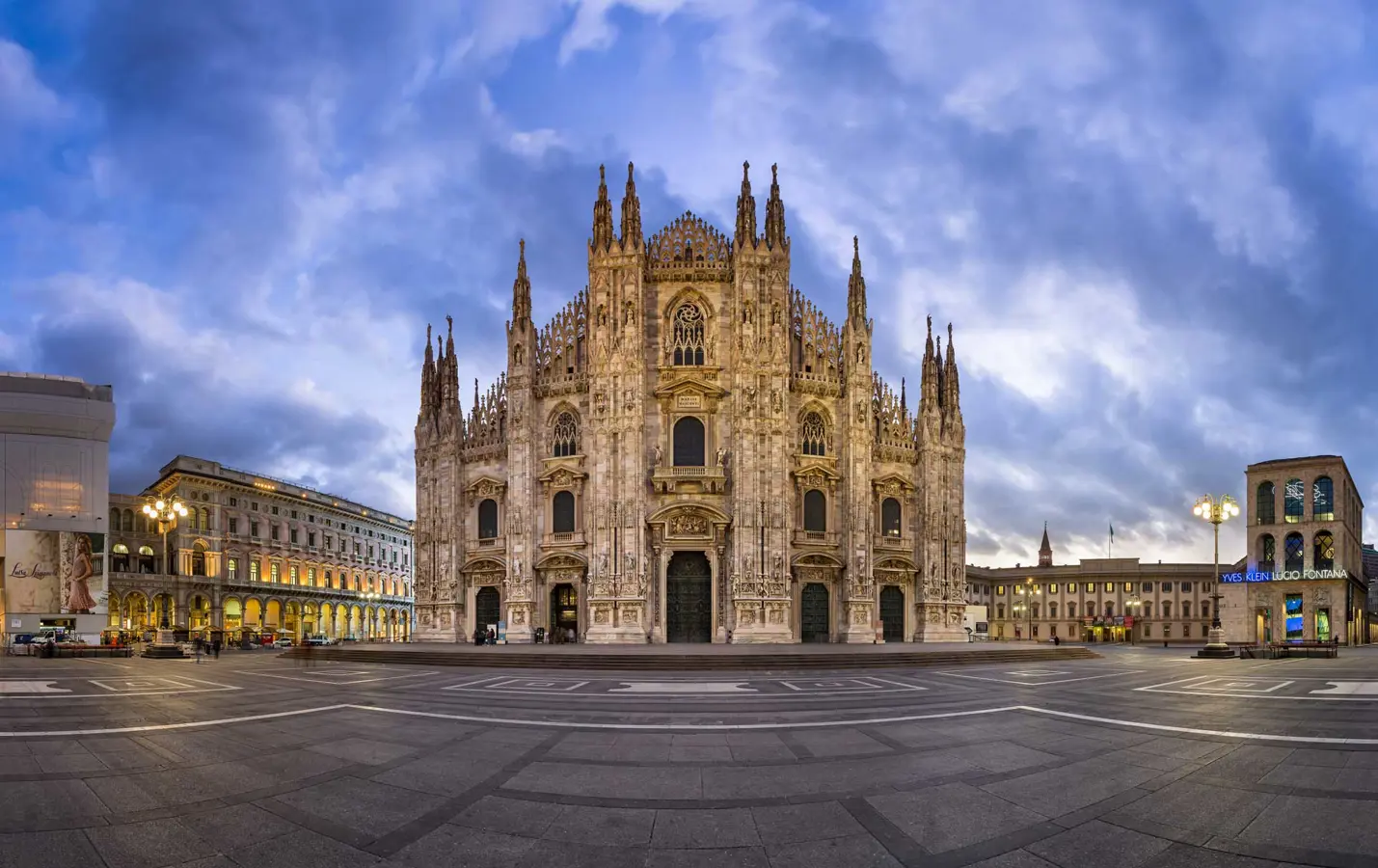
In addition Milan has numerous buildings dating back to the nineteenth and beginning of the twentieth centuries, that combine both functionality and beauty.
Lombardy is teeming with historic squares. Meeting places and central locations,
which are often overlooked by the most important buildings.
Upper Bergamo and its jewels
Piazza Vecchia in Upper Bergamo has the seventeenth-century ‘A. Mai’ Civic Library with white marble facade, the Palazzo della Ragione (literally Palace of Reason) with its thirteenth-century civic tower known as “il Campanone” (Big Bell Tower), behind which lies the Piazzetta del Duomo with the majestic Basilica of S. Maria Maggiore, the Colleoni Chapel, the mausoleum of the famous condottiere Bartolomeo Colleoni with unmistakeable facade of polychrome marble, the Duomo (Cathedral) dedicated to the city’s patron Saint Alessandro, and the Baptistery, an octagonal construction dating back to 1340.
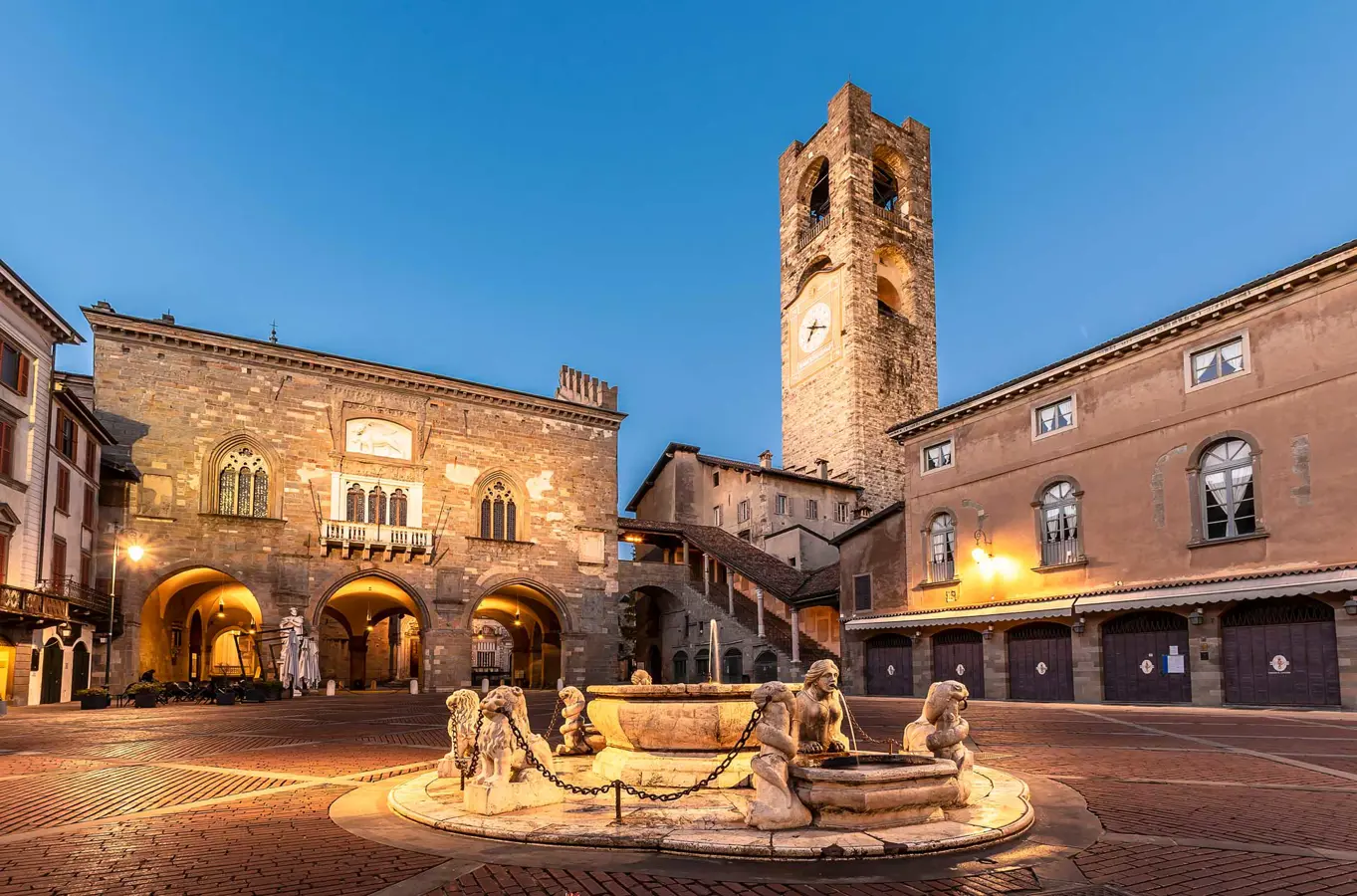
Cremona, the city of stringed
In Cremona, the city of stringed instrument makers, the Piazza del Comune (Town Hall Square), with the Torrazzo, the Cathedral, the Baptistery, the Loggia dei Militi and the Town Hall, is one of the most important squares in Italy.
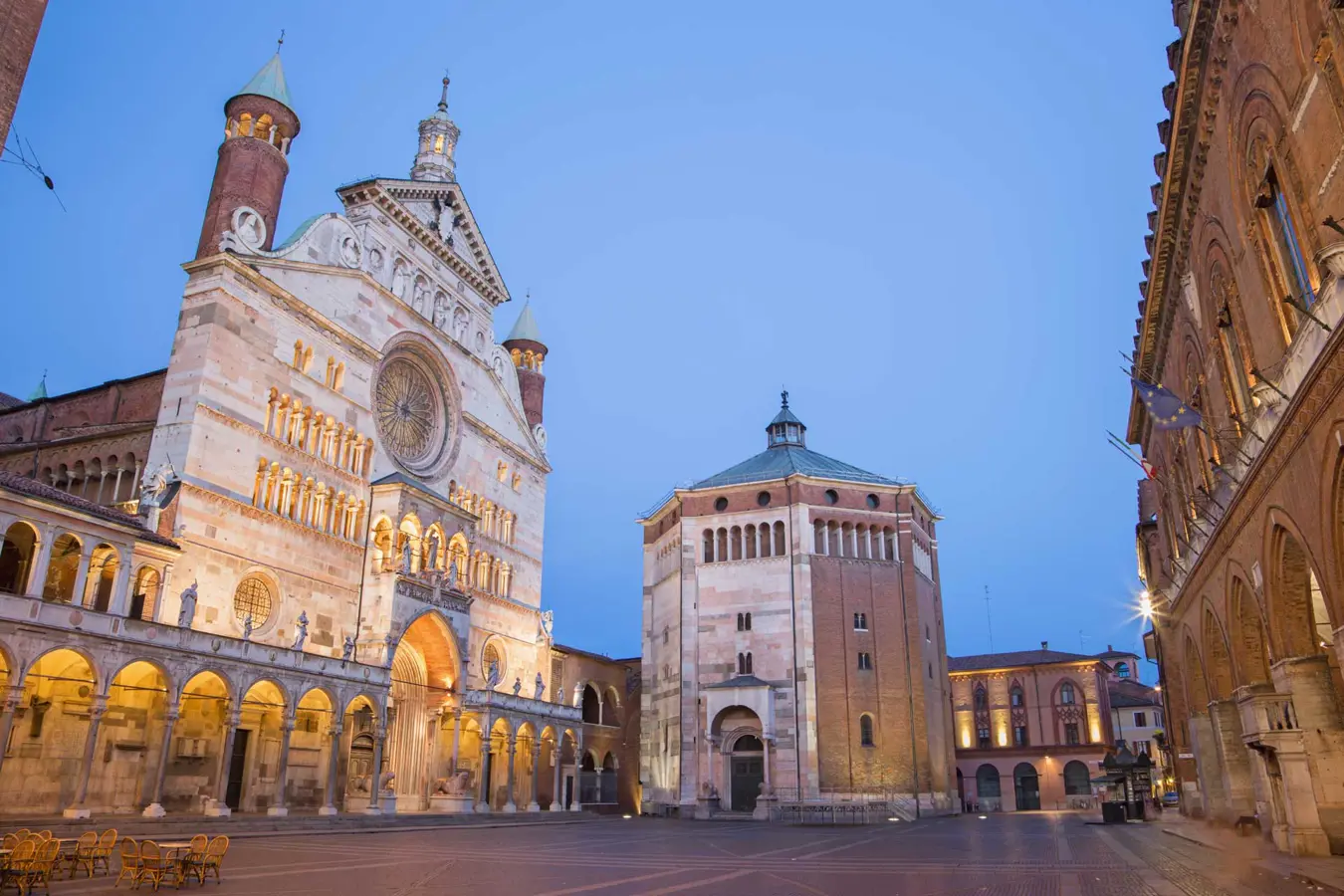
Brescia and Complex of Santa Giulia
Piazza Paolo VI, with the Palazzo del Broletto and the old Duomo, is the ancient heart of Brescia. The Complex of Santa Giulia is the Museum of the city recognized in 2011 by UNESCO as important Lombard monument in Italy. The UNESCO site also includes the Archaeological Park of Roman Brixia with the Capitoline Temple (or Capitolium), a theater, a Republican Sanctuary and a Basilica.
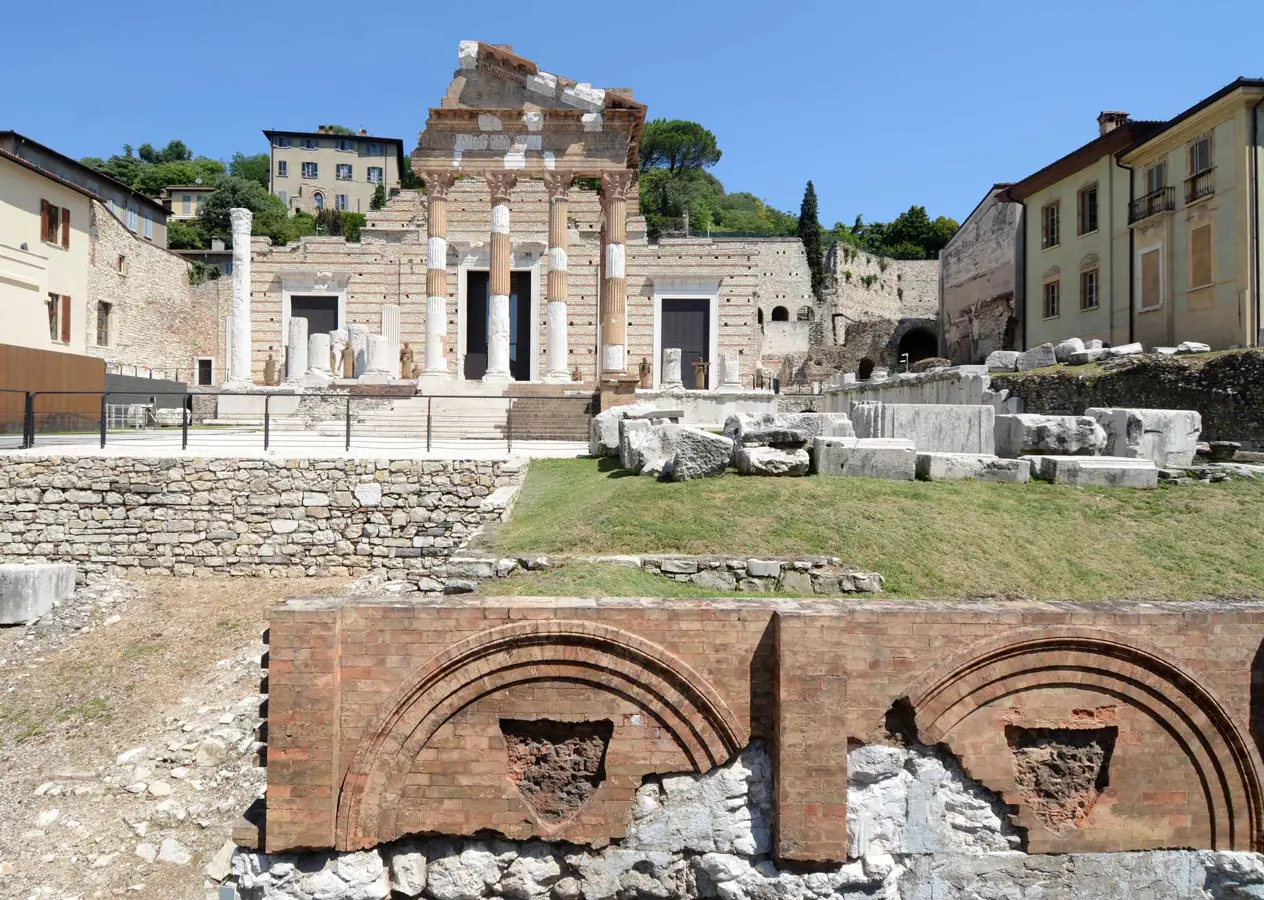
Piazza Ducale is the heart of Vigevano
Inspired by Leonardo da Vinci and built by Bramante, Piazza di Vigevano, with its porticos and concave Baroque facade of its Duomo, is considered one of the most beautiful in Italy and one of the most harmonious constructions of the Italian Renaissance.
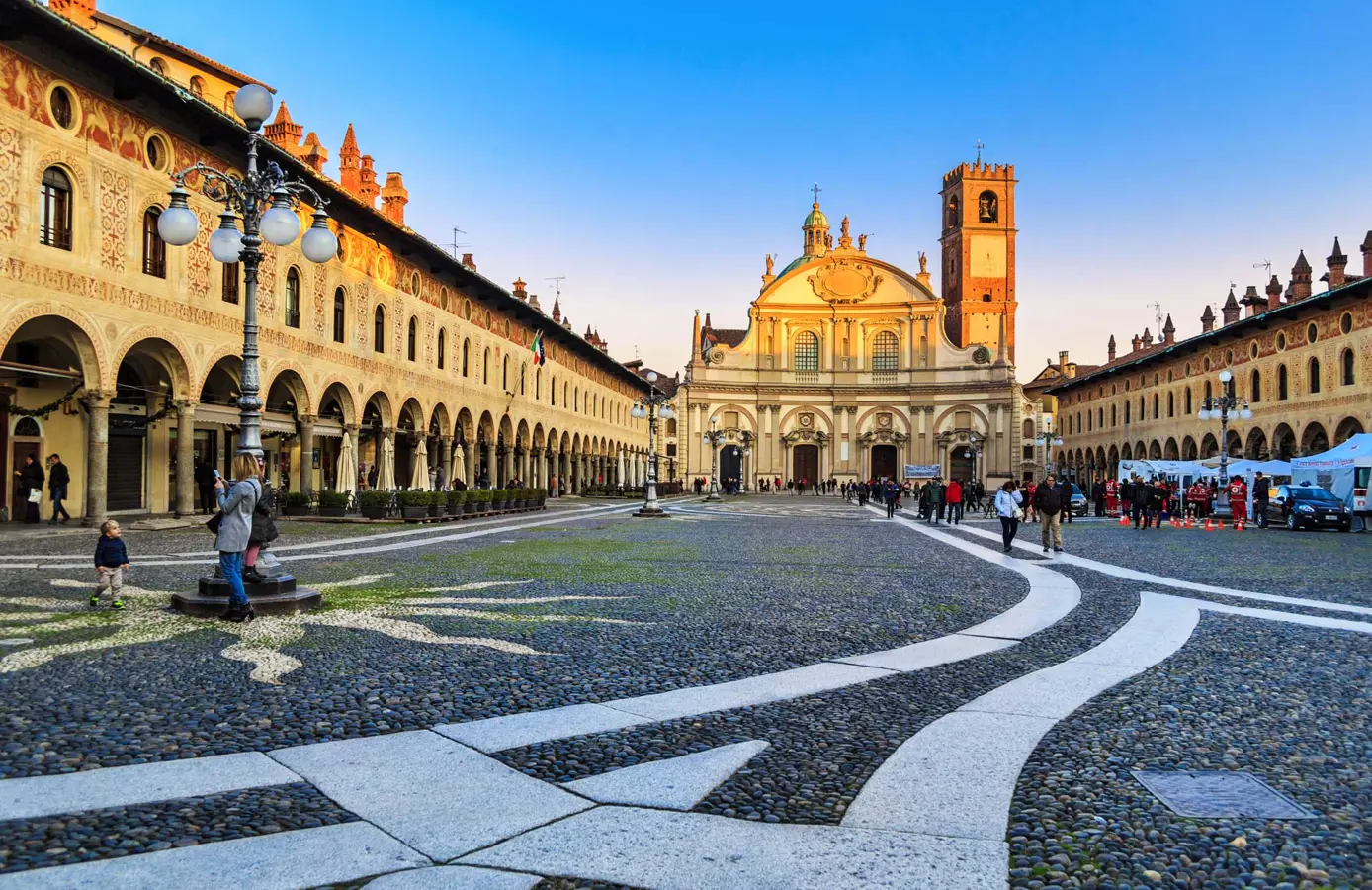
Mantua
Mantua, the city of the Gonzaga family, fully expresses the spirit of the Renaissance, from the rooms of the immense Ducal Palace, made famous by the work of Mantegna, to those of the refined Palazzo Te. Palazzo Ducale is one of the largest monumental complexes in Europe (34,000 square meters) and was the palace of the Gonzaga family.
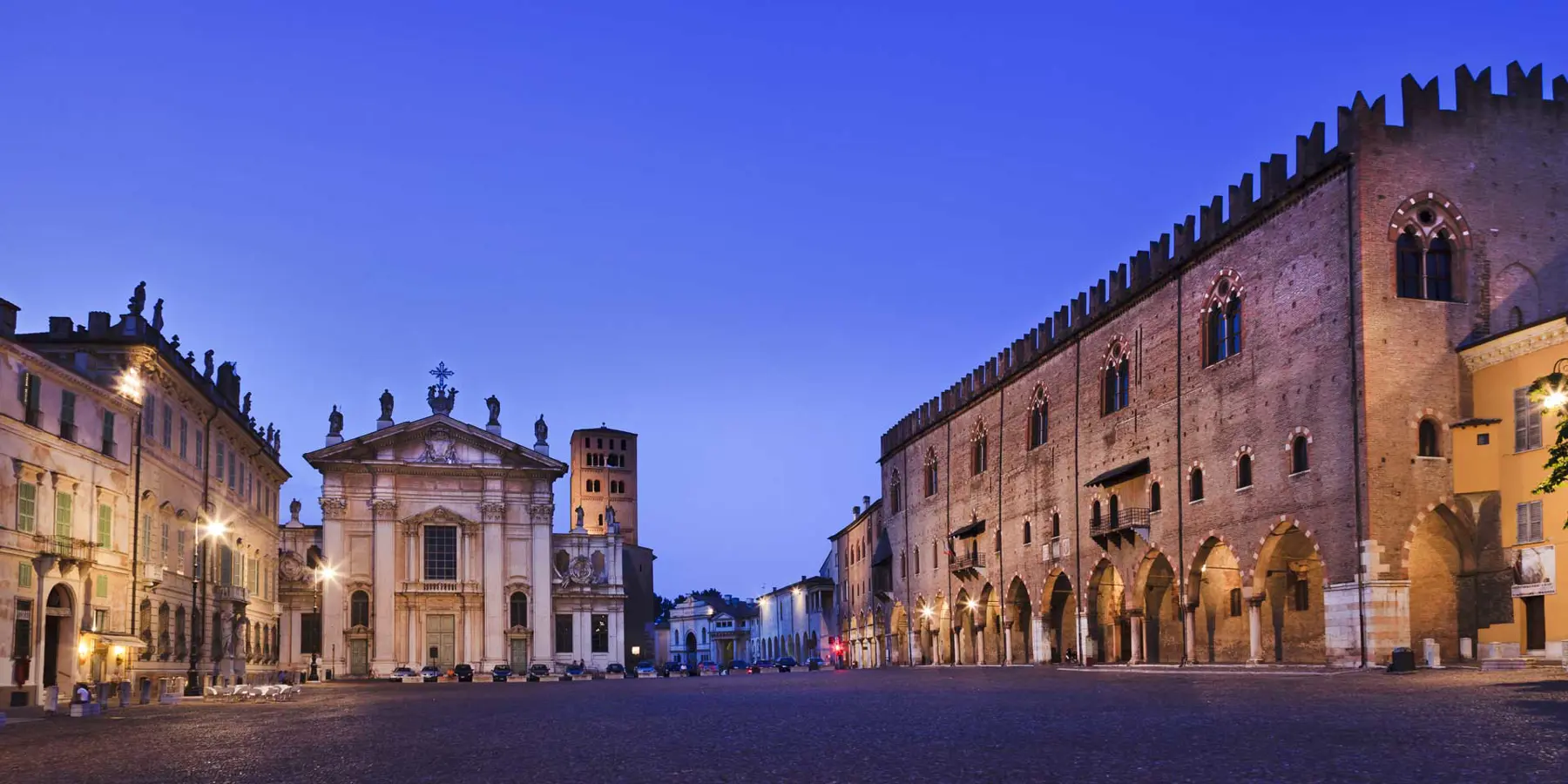
Palazzo Te is a masterpiece of Giulio Romano for Federico II Gonzaga. Inside you can admire the Sala di Amore e Psiche, with the frescoes celebrating the union between Federico II Gonzaga and Isabella d'Este; the Hall of the Giants depicting the fall of the giants by the hand of Zeus.
The Certosa of Pavia
Just outside Pavia lies the famous Certosa, a Carthusian monastery and one of the gems of the Italian Renaissance, with polychrome marble facade, pinnacles that ‘slim’ its shape, statues and medallions placed like architectural jewels. The construction of the Certosa of Pavia was commissioned by Gian Galeazzo Visconti and is a Cistercian monastery and Sanctuary of the Blessed Virgin Mary Mother of Grace, located in the homonymous municipality about 8 km from Pavia. The monument, dating from the fourteenth century, was built in the late Italian Gothic period.
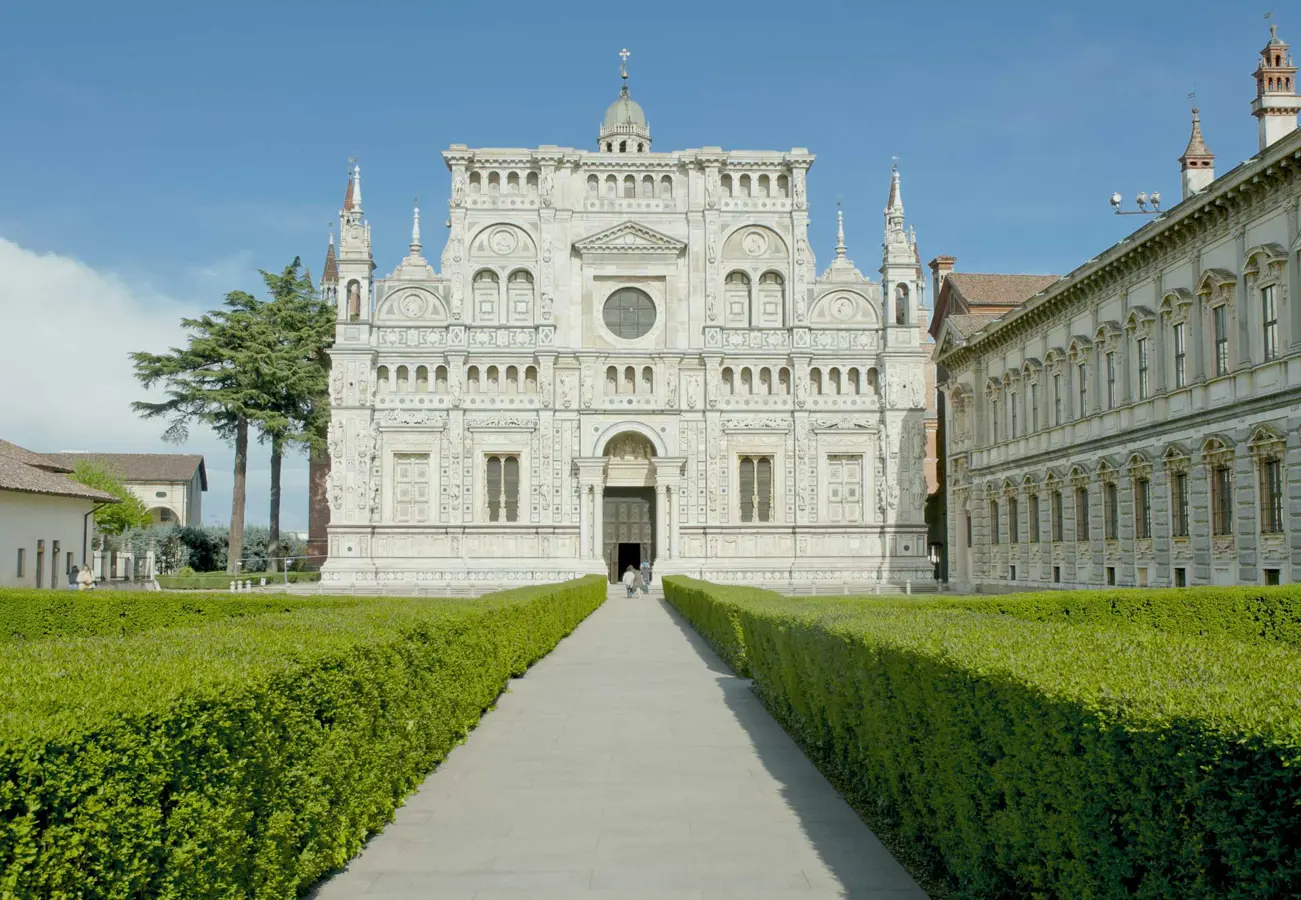
Since 1968 the Cistercian monks live in the Certosa, which also take guided tours of the church, the cloisters of the convent and the sale of sacred items and typical products. In the building near the church there is the shop run by the monks and the Certosa of Pavia Museum which, since 2008, is managed by the Superintendency for the historical artistic heritage of Milan.
Monza the city of the queen
The Duomo of Monza, which houses the “Corona Ferrea” (Iron Crown) of the Lombard kings, features different architectural influences from Baroque to Rococo. Dedicated to John the Baptist, it is the most important monument of Monza. It stands on the site where, around the year 595, Queen Theodelinda built a basilica.
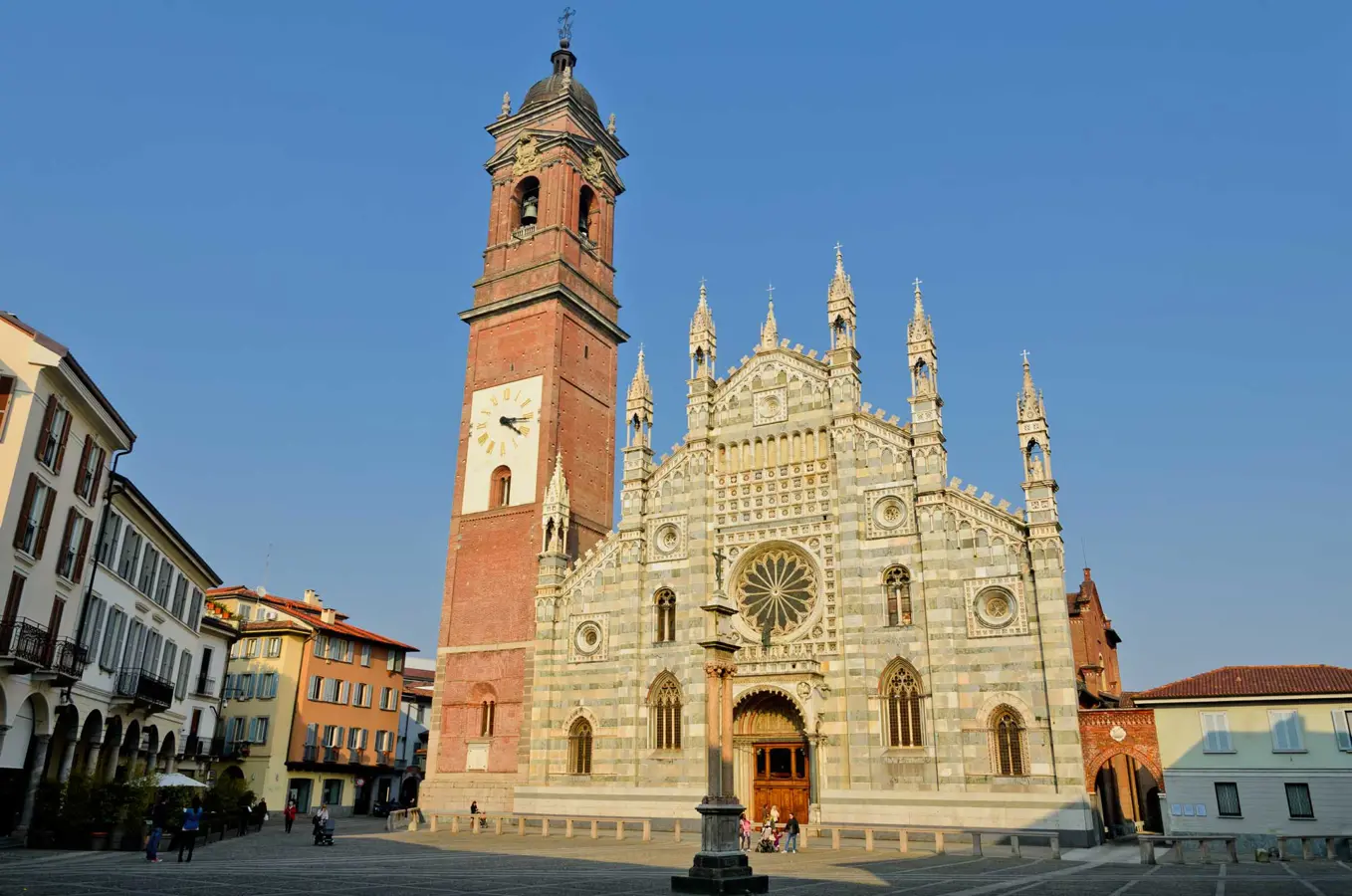
In 1300 the work of the new basilica began and ended in 1346 with the consecration of the high altar. The building was in Latin cross shape and with three aisles. The chapels were built in the second half of the 14th century, by the architect and sculptor Matteo da Campione, who also widened the façade.
The cities on Lake Como and Lecco
In the city of Como and along the entire perimeter of the Lake Como, historic buildings, splendid villas and solemn religious buildings with artistic treasures and natural beauty can be admired.
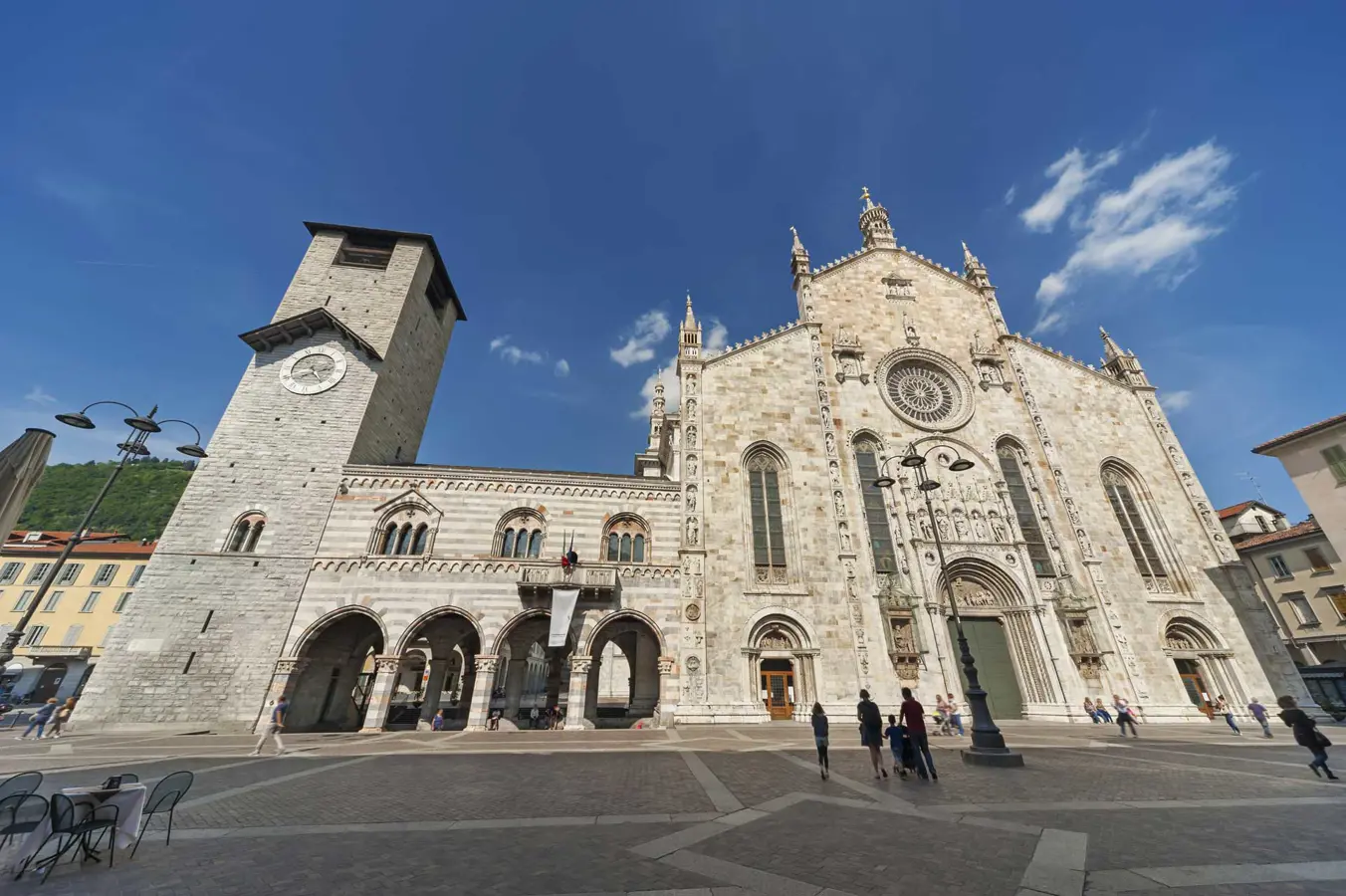
The interesting Manzoni itinerary in Lecco offers the opportunity to visit the places that inspired the famous novel “The Betrothed”.
All rights reserved.
Partnership with Booking.com
Where to sleep in the Lombardy's art Cities
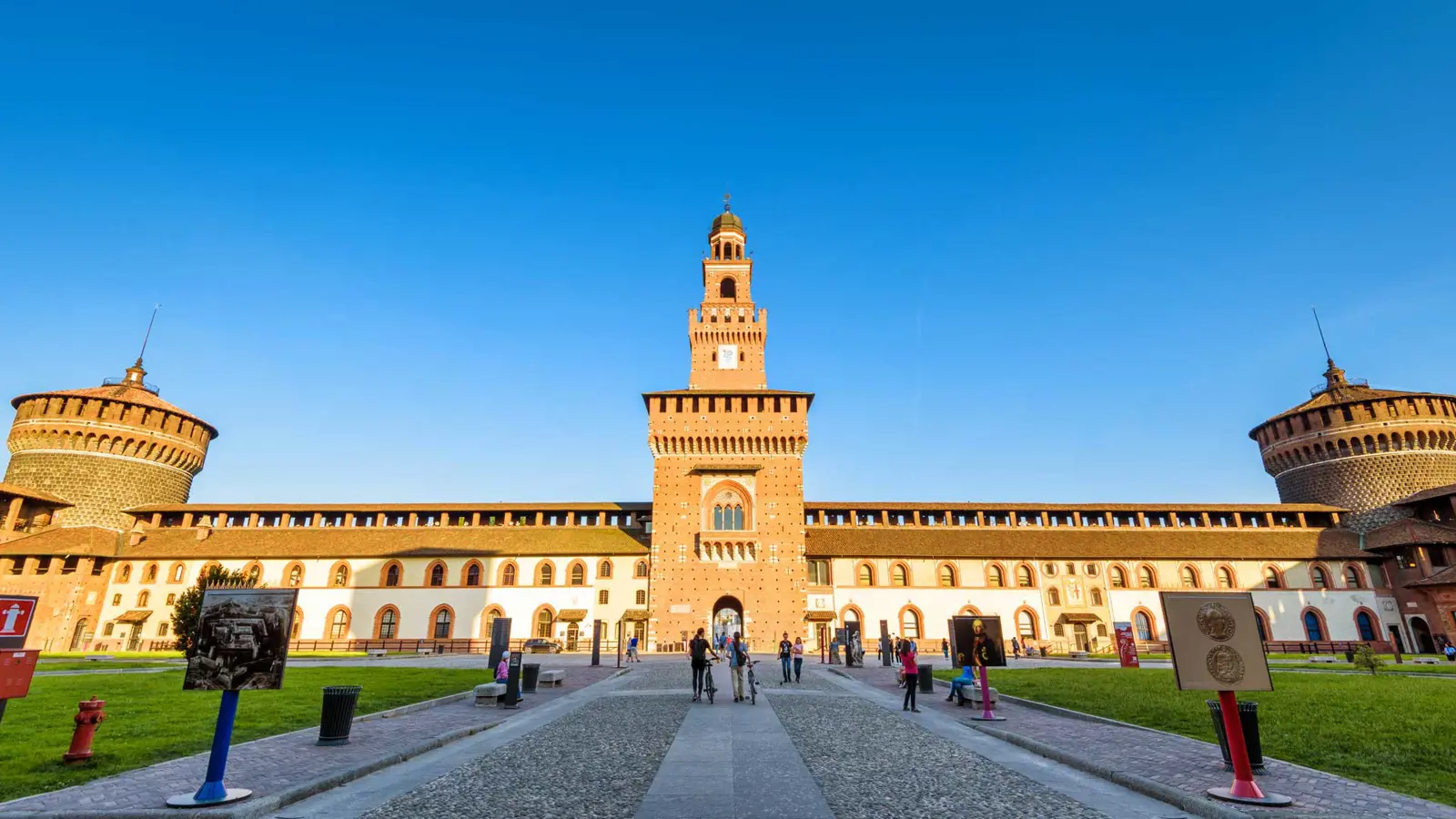
The most beautiful Lombardy's art Cities, with their hotels equipped with every comfort, offer a cozy stay.
To find the best deals and the ideal hotel you can search for those located in the city centre, close to the most important
To find the best deals and the ideal hotel you can search for those located in the city centre, close to the most important
tourist attractions, to visit therefore also comfortably on foot or easily reachable by public transport.
HOTELS
Hotels in the urban center of:
AIRPORTS
Hotels near Lombardy's airports:
Partnership with GetYourGuide
Tours and excursions in Lombardy
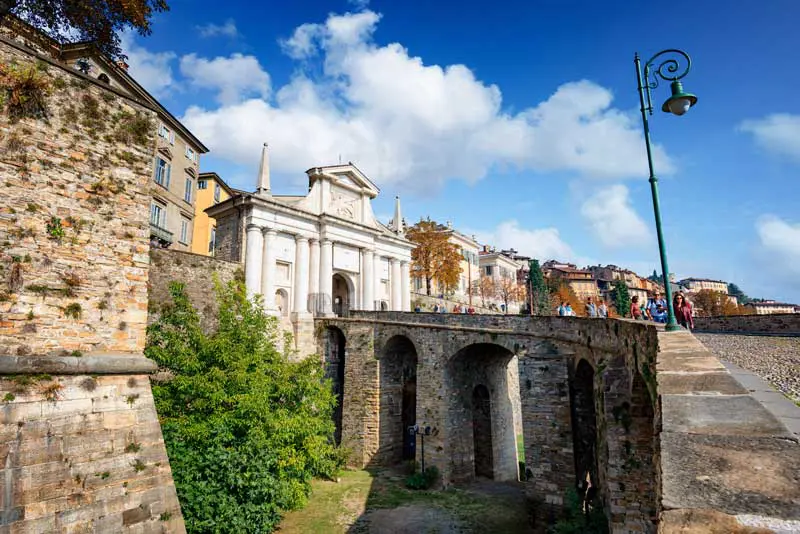
BERGAMO: TOUR DI CITTÀ ALTA
2.5-hour guided private tour of Upper Town. The tour start from Piazza Mercato delle Scarpe until you reach the Rocca Castle, a spot from which you can enjoy a view on the Lower Town.
The walk continue towards Piazza Vecchia, the heart of the Upper Town, and then Piazza Duomo, the Basilica of Santa Maria Maggiore, the Cathedral, the Baptistery and the Colleoni Chapel. Walk along shops, restaurants and coffee houses. The end of tour is in the Cittadella, built by the Visconti family back in the 14th-century. Duration 2.5 hours. More information: tour.
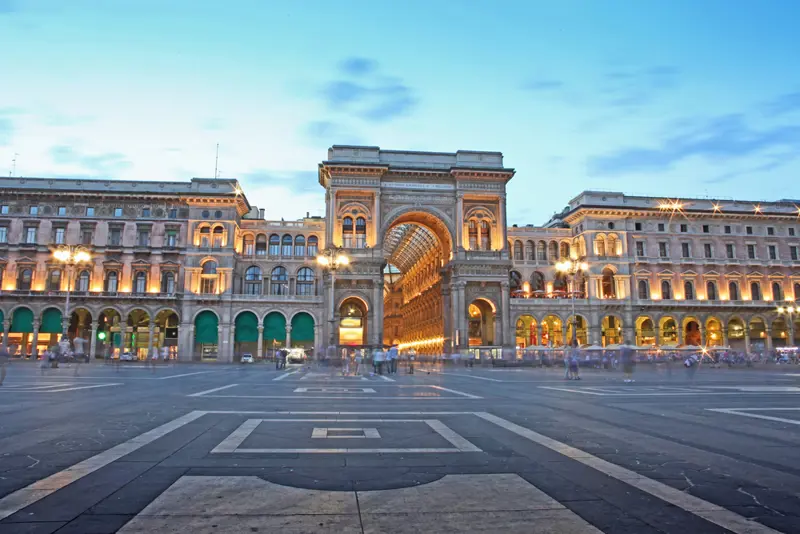
MILAN: WALKING TOUR
AND PRIORITY TICKET TO THE LAST SUPPER
Discover the main monuments of Milan with 3-hour walking tour to see the history of the most important city in northern Italy with a licensed guide. You can see: the historic church of Santa Maria delle Grazie and Da Vinci's miraculous mural of The Last Supper (skip the long queues), the 15th-century Sforza Castle, the Piazza della Scala, La Scala theatre, Palazzo Marino, the 19th-century Galleria Vittorio Emmanuele II and Piazza Duomo, the 3rd largest Christian church in the world thousands of statues and spires. Duration 3 hours. More information: tour.
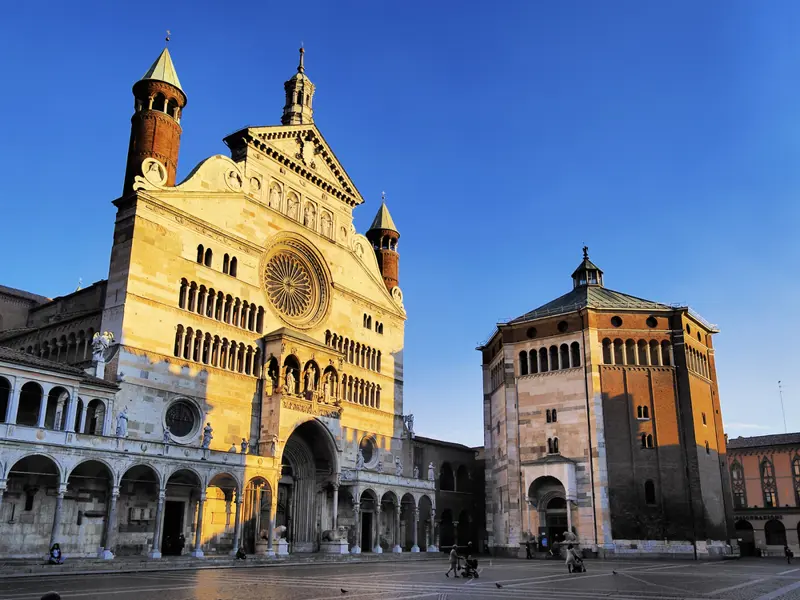
CREMONA: WALKING TOUR
AND TICKET FOR VIOLIN MUSEUM
Private Tour of Cremona withe an expert guide to discover: the most beautiful sites around the old town, such as Piazza Stradivari, Piazza del Comune, the Cathedral of Cremona and the Torrazzo, the Church of Sant'Abbondio and the Church of Santa Agata. The tour then continues in the district of Luthiers with historical shops in Via Solferino. At the end, visit the Violin Museum of Cremona with audioguide (in Italian or English). Duration 3,5 hours. More information: tour.
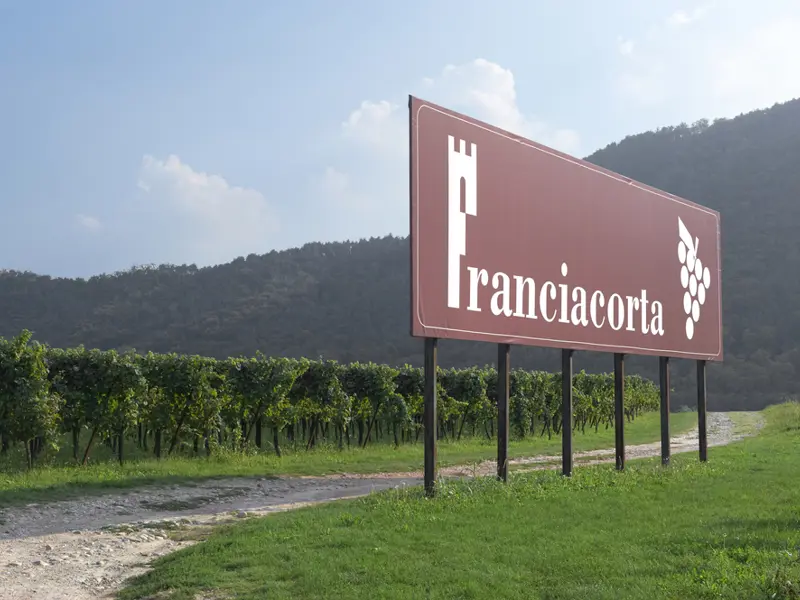
FROM BRESCIA: 3-HOUR FRANCIACORTA WINE TOUR AND TASTING
Private tour in a beautiful area, surrounded by green hills and near the Lake Iseo, to discover the vineyards of Franciacorta and their history and tradition. Departure from Brescia with a private car transfer. After approximately half an hour, the tour start by discovering the vineyards of Franciacorta. After that, a guided wine tasting different varieties of wines accompanied by some typical local products.
Duration 3 hours. More information: tour.
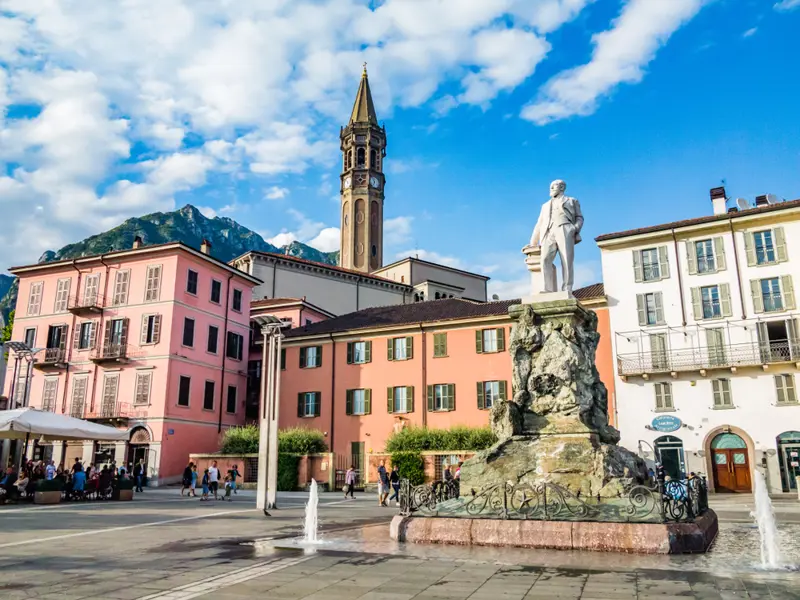
LECCO: HISTORIC AND FOOD WALKING TOUR
Private walking tour to discover the city of Lecco and taste typical local products. With the tour you can admire Piazza Cermenati at the foot of the steps leading to the Basilica di San Nicolò and the bell tower of Lecco; the Palazzo delle Paure which houses the art gallery and the Lecchese Alpinistic Observatory; the Church of Santa Marta, the Teatro della Società with the monument to Garibaldi and Alessandro Manzoni; the Sanctuary of Our Lady of Victory; the Azzone Visconti bridge to see the Visconti Island, which is located in the middle of the river Adda. During the tour, taste local products such as cheese, oil, wine and salami.
Duration 3 hours. More information: tour.
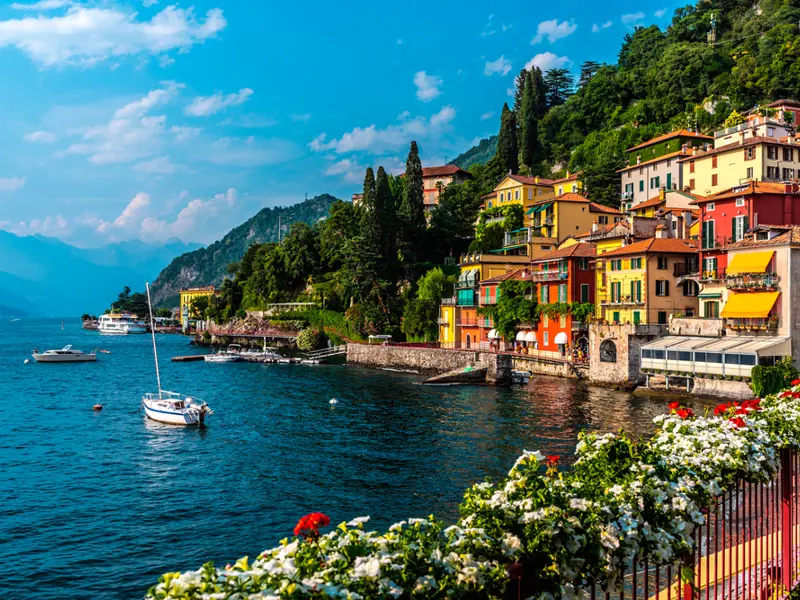
LAKE COMO: VARENNA AND CRUISE TO BELLAGIO
Private tour with guide from Varenna to Bellagio. Visit the old fishing village of Varenna on Lake Como. Admire: hidden alleys, the beautiful lakeside Love Promenade, the villas, the Lord of the Lake statue, a bronze statue of Christ which extends 5 meters down into the lake. Sample traditional dishes and local specialties at the restaurants and cafes on the waterfront. Then with a Venetian-style boat continue the tour on a 20-minute cruise to Bellaggio, where end the tour. For you a souvenir and a tourist map with the tour operator's suggestions about what to do and how to travel from Bellagio.
Duration 3 hours. More information: tour.
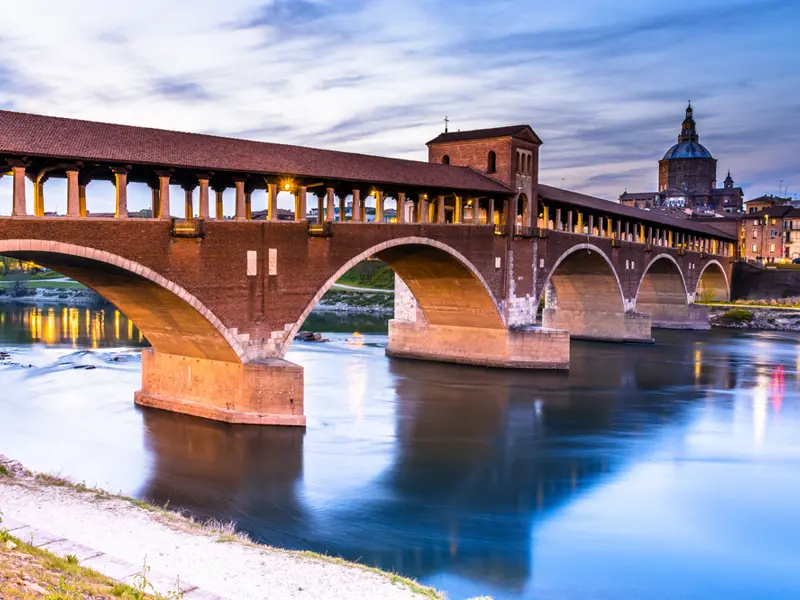
FROM MILAN: PAVIA AND OLTREPO PAVESE TOUR
Tour with driver and professional guide and pick up in hotel to discover Pavia, with its 100 towers and its university which was founded in 1361. Visit: Ponte Coperto or Ponte Vecchio; the Church of San Michele, the Duomo e il Castello Visconteo. Then, with the driver go to Oltrepo Pavese for the wine tour. Through hills and its medieval hamlets, visit a winery and taste wine served with local Salame of Varzi. Have time for a relaxing stroll and a lunch in a local agriturismo/trattoria. After lunch, continue to the Certosa di Pavia, located 8 kilometers north of Pavia, encompasses a monastery, a sanctuary and gardens. After the visit, back to hotel in Milan with your driver.
Duration 9 hours. More information: tour.
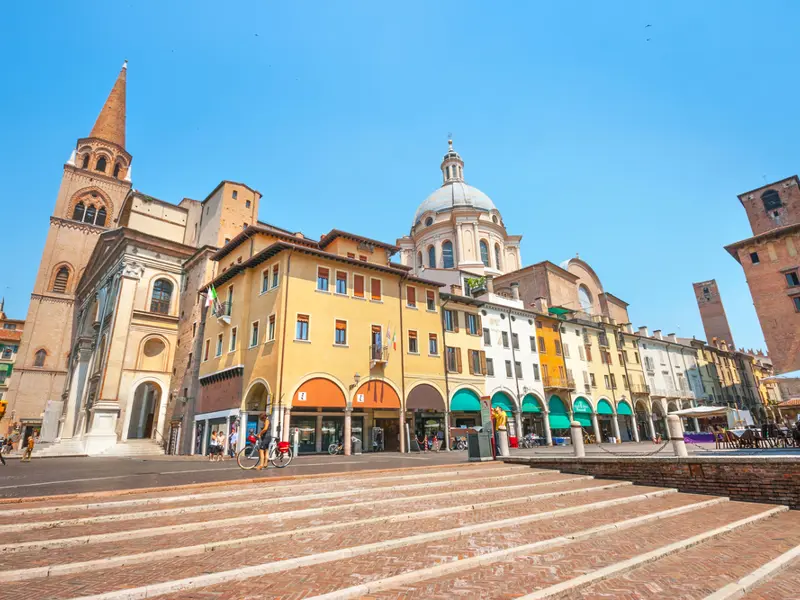
MANTUA: 2-HOUR GUIDED WALKING TOUR
2-hour walking tour of Mantua. Visit: Casa di Rigoletto, Castle of St. George, Palazzo Ducale, Piazza Castello, Piazza Santa Barbara e Piazza Lega Lombarda. Than, the Mantua Cathedral, dedicated to Saint Peter, Palazzo Bonacolosi, Piazza Broletto, Palazzo del Podestà, Palazzo del Massaro and Arengario. Than, Piazza delle Erbe with the Astronomical Clock Tower, Palazzo Cervetta and Palazzo della Ragione. Admire the church of the Rotonda di San Lorenzo, the massive dome and Renaissance exterior of the Basilica di Sant’Andrea. Continue to see the former cloister of Sant'Andrea Monastery.
On request, visit the Bibiena Theater where Mozart played.
Duration 2 hours. More information: tour.
Discover all the tours and excursions
News & Useful info
Shopping
Luxury
Destinations found in the vicinity
Other destinations



